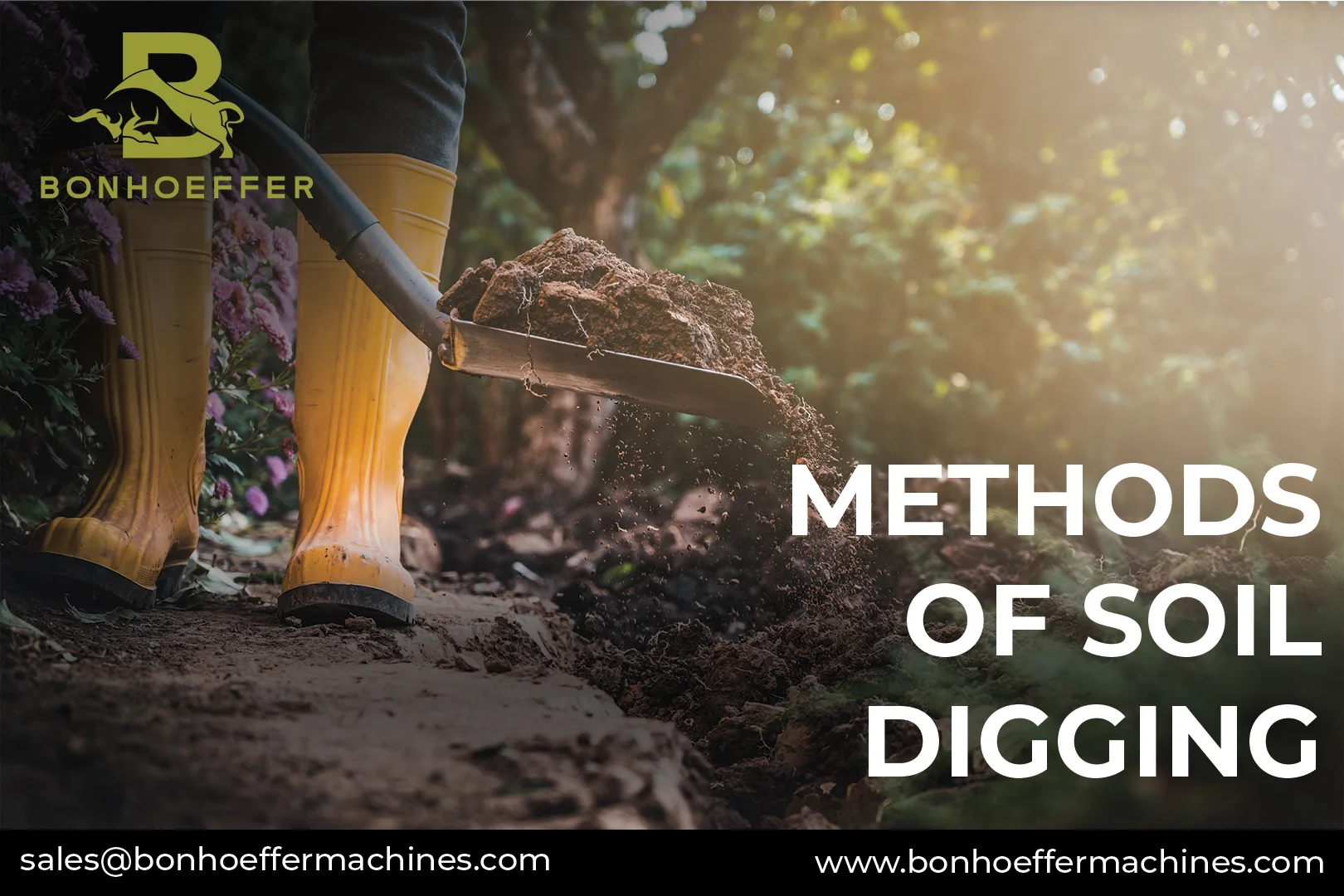
Soil digging is the most vital task in the construction and agriculture industry. There are many methods available for soil digging. In gardening, digging holds a role like ploughing in agriculture. Soil digging constitutes a fundamental and vital step in preparing land for gardening. Effective digging serves to enhance soil aeration, optimize drainage, and eliminate impediments that could hinder plant root growth. Post-digging, it’s essential to eliminate any obstructions like boulders, stones, tree roots, and weeds, ensuring a well-prepared planting environment.
What are the digging techniques?
There are several digging techniques, including simple digging, double digging, and deep trenching. Let’s delve into these techniques to gain a comprehensive understanding of how to dig a garden effectively:
Simple Digging:
In simple digging, a spade is used to turn the soil inside out within the same bed, without removing it. It’s crucial to remember that the richest and finest soil should remain at the top layer, usually about 20-25 cm (8-10 inches) deep.
During this process, small stones within the soil can be left in place. These stones contribute to improved drainage and help maintain a cool root system. The plant’s roots can navigate around the stones without obstruction. For seedbeds, however, it’s advisable to sieve the soil due to the delicate root systems of young seedlings.
Bracing Excavation Technique –
The bracing method encompasses various components, including wales, struts, centre posts, end braces, and corner braces. This system is designed to effectively manage earth pressure during excavation processes.
The horizontal struts play a pivotal role in redistributing the earth’s pressure, which is transferred through Wales. Meanwhile, the corner and end braces serve the specific purpose of reducing the span of Wales without requiring additional struts. This strategic placement helps maintain the structural integrity of the excavation.
Furthermore, the inclusion of centre posts is crucial in preventing the struts from failing due to their own weight. By strategically countering this potential weakness, the centre posts contribute to the overall stability and safety of the bracing system during excavation activities.
In the practice of double digging or trenching, the width of the bed is typically sectioned into strips measuring around 40-60 cm (1.5 to 2 ft). The depth to which the soil is excavated varies according to the specific needs of the plants being cultivated.
Initial Phase
The initial phase involves digging the soil to a depth of one spit. The uppermost layer of soil, about 20-25 cm, is carefully removed from the bed’s perimeter.
Subsequently, the bed is further excavated to achieve the depth of another spit (approximately 20 cm), thus constituting two spit digging. During this process, any large stones, metallic fragments, tough fibres, etc., are meticulously extracted. Additionally, clumps of the earth are broken apart.
To enhance drainage, a layer of small stones, gravel, grass, leaves, etc., approximately 5-7 cm (2-3 in) deep, is placed at the bottom of the second spit. This mixture is then thoroughly blended with the soil after it’s enriched with organic matter.
The second trench is then dug to the depth of one spit, and the topsoil from this trench is transferred to the first trench. The same depth of two spit digging is executed in this second trench, replicating the procedure from the first trench.
In a reciprocating manner, the topsoil from the initial trench is subsequently shifted to the second trench, culminating in the completion of the double digging or trenching process.
For beds divided into more than two strips, this approach can be iterated with a modification: the topsoil from the first strip is relocated to the last strip. Likewise, a similar procedure can be extended to triple digging or deep trenching, where the top two soil layers are removed and transposed to adjacent strips.








